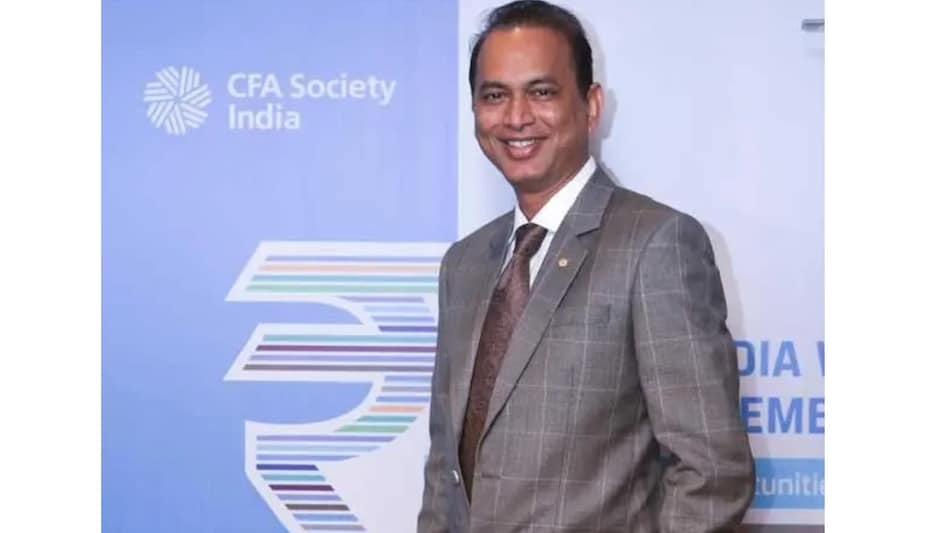 'World is moving from dragon to elephant and asset allocators want to increase India exposure': Sunil Singhania
'World is moving from dragon to elephant and asset allocators want to increase India exposure': Sunil Singhania
 'World is moving from dragon to elephant and asset allocators want to increase India exposure': Sunil Singhania
'World is moving from dragon to elephant and asset allocators want to increase India exposure': Sunil SinghaniaSunil Singhania, founder, Abakkus Asset Manager said Indian economy has been in a sweet spot in 2022 even as rest of the world has been dealing with multiple challenges.
Speaking to BT TV Managing Editor Siddharth Zarabi and Sr Associate Editor Sakshi Batra, the ace investor said it's commendable that India managed to grow at upwards of 7% in a very tough global macroeconomic environment.
"In 2022, most countries were debating whether there will be recession or 0% growth while in India the debate was whether India will have 6% or 7% growth. India managed to grow at upwards of 7% in a very tough global macroeconomic environment. For 2023 and 2024, institutions like World Bank, IMF have forecast that India will be the fastest growing economy in the world and grow at upwards of 6.5%. India has shown resilience during Covid, Ukraine war, wild swings in commodity prices and high interest rates, which is very commendable," said Singhania.
He attributed India's economic resilience to four Ds -- demographics, democracy, digital economy and domestic consumption.
"World has realised that after the Ukraine conflict and the potential threat of conflict leading to China, democracies are the places to be in. We are one of the youngest large economies with a median age of less than 30 years and at least for the next 20-25 years, our median age will be less than 35 years. We have lagged a little bit in terms of physical infrastructure, our digital thrust has done a lot of good. Efficiency, connection have improved and so have compliance. Generally, as an economy, we are becoming more and more efficient.
"The reason why India managed to grow at 7% while the world was struggling is because more than 80% of India's economy is domestic-driven. We celebrated festivals, travelled, had marriages at a time when world was struggling," said Singhania.
"Also, oil has been on the softer side. Yes, it rose in the last month or so but even at $80 per barrel we are still down 20% than last year's average and that's a big, big positive," he added.
He said that global investors are moving away from China and looking at India to increase their exposure.
"We are noticing that world is moving from dragon to elephant, which is China to India and government is also taking steps, like banning exports of laptops and PCs from China and encouraging their manufacture in India. Asset allocators are also looking at India to increase their exposure," he said.
He said Indian markets are far more diversified than Brazilian or Chinese ones.
"Good thing about Indian economy and markets is that we are pretty diversified, unlike Brazil, which is predominantly commodities or Russia, which is predominantly oil and gas or China, which is predominantly government-controlled companies," said Singhania.
When asked about which sectors he's bullish upon, he said financial companies' stocks should do well in next 2-3 years.
"Financial segment continues to do well. Stock prices have moved up but profits have moved up even faster. From our perspective, for next 2-3 years financial sector is a good one to hold onto. Obviously, pharma has made a comeback, particularly the domestic-focused pharma. Only thing is that with pharma you can't take a bet with sector perspective, company-specific fundamentals are important because you have regulatory issues. We are optimistic about steel. Our view is that companies' balance sheets are spic and span and outlook, from both global and domestic perspective, is quite robust.
"We are also quite positive on consumption, especially discretionary consumption, for the next 3-4 years, like building materials etc. Right now, one-third of Indian population has income level where they can afford some want and this one-third will go to two-third in next 8-10 years. So, I think discretionary consumption is a great sector," he said.